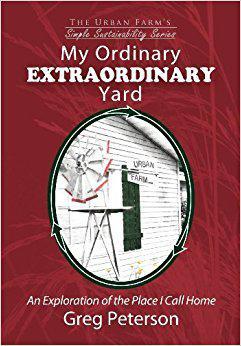2015, Year of the Urban Farm: Why I Do What I Do
By Greg Peterson
Welcome to 2015…The Year of the Urban Farm. I am so incredibly excited about the momentum that we as an urban farm community have created over the past two decades. Especially in the last 3 years, people have come onboard to the ‘grow your own’ movement in record numbers. I remember having a conversation with a nursery owner a few years ago and she told me that they were having trouble keeping seeds on the shelves because there were so many people gardening. On one hand I was ecstatic, on the other—shortages of seeds? The good news is that those seed shortages were relatively short-lived and the market forces of seed entrepreneurs stepped in and grew and supplied seeds.
My journey in exploring our food system began in 1975 when I was in the 8th grade. It has been an interesting one that has spanned from “who is that crazy guy growing food in his front yard?” to becoming a bit of an urban hero. I love what I do and what propels me forward most days is my ability to share all of the great things that one can do to plug into the local food economy.
When I lecture I love asking the question, “So how many of you participate in the food economy every day?” It is a bit of a brain teaser, especially when we add the word economy, and that is why I do it…to get people thinking. When we move through life without giving any thought to it we unconsciously get caught up in the flow, which may take us where we want to go, but most often not. So I like to plant the seeds of cultural change every time I write and speak.
What is the food economy? The process of growing, harvesting, packaging, marketing, distribution, preparation and disposal of food. It is a quite extensive ‘just in time’ manufacturing model that brings food to the grocery store shelves just when we need it. The process in itself is pretty amazing, having been set up to feed almost 320 million people just here in the United States alone. The problem is that this ‘just in time’ model leaves only three days’ worth of food on any grocery store shelf, and I argue that if there is a hiccup the grocery store, shelves will be empty in three hours.
So what do we do about this? There is one simple yet powerful action you can take: begin to participate in the LOCAL food economy. The model of local food supports and grows our local food systems so that, if there is a hiccup, we are covered since there will be food growing everywhere–and, if there isn’t one, we have healthy happy food growing everywhere. Either way we win.
My friend and colleague Miguel Jardine and I developed a model we call the LFE or Local Food Economy a few years ago, which includes seven categories: education, creating farmers, culture, seeds, value-added products, collection and distribution, and farming methods. Each of these categories represents a significant piece of our local food system that feeds, nourishes and employs us.
So how do you participate in the local food economy? First and foremost, buy local food by shopping at local stores and restaurants. This is usually quite simple…just find a farmer’s market to visit each week and, when you eat out, select restaurants that purchase locally grown food. Start simple—maybe spend an extra $5 per week locally and work up from there.
Next, begin to grow your own food. Growing your own food is easy and once you make this discovery you will be hooked. This is where we come in. Over the next few months we will be launching several new online classes designed to walk you through the processes of growing your own food and saving your own seeds. Watch our newsletters for all kinds of free webinars and online classes to walk you through this process.
Finally, if you are feeling really energetic, you might think about starting your own local food economy business. The cool thing about the LFE model is that there are so many places that you can plug in and make a living while contributing to the system. Start a seed growing business, become a local purveyor of specialty value-added products or grow food in your front and backyards to share with the community. The possibilities are endless, and they bring resiliency to our communities, food to our plates and prosperity to our finances.
2015 is the most exciting urban farming year I have seen. The possibilities for contributing and participating in it are virtually endless. Take a class, go to a market, and play full out in our local food system.







